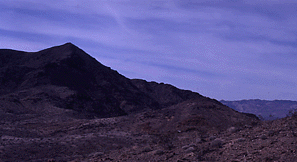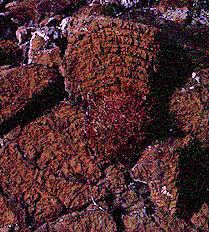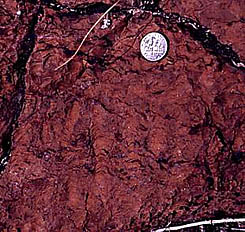Localities of the Proterozoic:
The Nopah Range



Scattered throughout the Mojave Desert, outcrops of Proterozoic sedimentary rock make up parts of the mountain ranges that divide this region into basins. The oldest sedimentary rocks in this area are about 1.5 billion years old. Overlying rocks continue all through the later Proterozoic and up into the Cambrian and beyond. While this region is not as famous or as intensively studied as are correltive horizons elsewhere, it has produced a number of intriguing fossils, including some remarkable stromatolites (layered structures formed by growth of bacterial mats), as well as microfossils of early eukaryotes.
The image above shows an outcrop of later Proterozoic limestone in the Mojave Desert -- in the Alexander Hills of the Nopah Range of southeastern California, near the small town of Tecopa. These limestones belong to the Johnnie Formation, and are about 650 million years old, although their exact age is not well known. These limestones are rich in stromatolites, such as those pictured below.


Nopah stromatolites : The pictures above show two stromatolite growth forms found in the Nopah Range. On the left are domical, or dome-shaped, stromatolites; on the right are columnar stromatolites.


